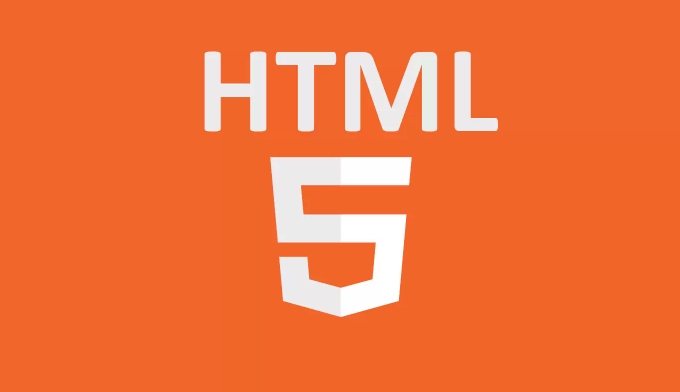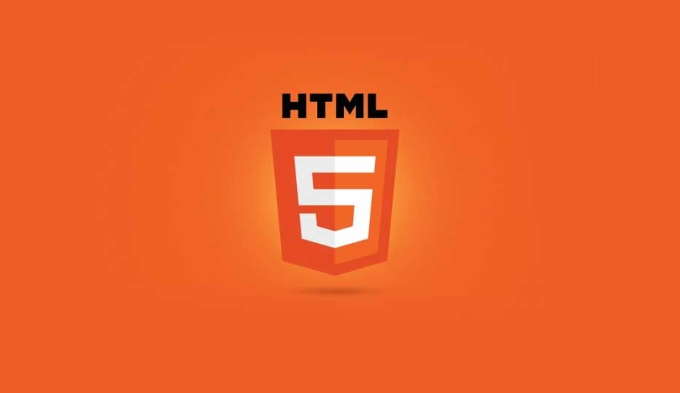localStorage is a client persistent storage solution provided by HTML5, suitable for saving small data such as user preferences. 1. It has a long life cycle and does not lose data after closing the page or browser; 2. The scope is homologous and supports multi-tag sharing; 3. It can only store strings, and objects need to be converted by JSON.stringify(); 4. Common APIs include setItem, getItem, removeItem and clear; 5. The storage upper limit is usually 5MB, and an error will be reported after exceeding the limit; 6. Pay attention to performance, security and cross-domain issues when using it.

Using HTML5's localStorage API for persistent data storage is actually a very practical trick. It is not like cookies that every request is transmitted to the server, but is directly stored in the browser, suitable for storing some data such as user preferences and status information. The point is that it is "persistent" and will not be lost even if the page is closed.

1. What is localStorage? What are the characteristics?
localStorage is a client storage method provided by HTML5, which is similar to sessionStorage, but the difference is:

- Different life cycles : sessionStorage closes the tab page and is gone, localStorage remains until manually cleared or deleted.
- Different scopes : they are all homologous restrictions, but do not affect cross-tab communication. Multiple tabs can read and write the same localStorage data.
It can only store strings, so if you want to store objects or arrays, you have to use JSON.stringify() to turn them first.
2. How to use it? The basic operation is very simple
The localStorage API is very simple, and several commonly used methods:

- Save data:
localStorage.setItem('key', 'value') - Get data:
localStorage.getItem('key') - Delete data:
localStorage.removeItem('key') - Clear all:
localStorage.clear()
For example, if you want to remember the user's nickname:
//Save localStorage.setItem('username', 'JohnDoe'); // Take const name = localStorage.getItem('username'); console.log(name); // Output JohnDoe // Delete localStorage.removeItem('username');
Note that if you don't delete it, this value will always exist, even if you refresh the page, close it and open the website, it will still be there.
3. How big data can be stored? Are there any restrictions?
Although it is called "persistent storage", it is not infinite space. Generally speaking:
- The browser usually allocates about 5MB of space to localStorage
- Different browsers may differ slightly, such as Chrome and Firefox are slightly different
- If the capacity is exceeded, a QUOTA_EXCEEDED_ERR error will be thrown
So don't think about using it to save large files or large amounts of structural data. If you find that you can't save it, it may be over.
4. What issues should be paid attention to when using it?
There are several details that are easy to get stuck:
- Only strings can be stored , and the object is remembered by JSON.stringify()
- Synchronous operation , frequent reading and writing may affect performance (but generally not too serious)
- Security issues : Do not store sensitive information, because it is stored in plain text
- Cross-domain isolation : localStorage under different domain names is completely independent
For example, if you want to save a user settings object:
const settings = {
theme: 'dark',
fontSize: 16,
};
// Make correct approach localStorage.setItem('userSettings', JSON.stringify(settings));
// When reading, parse must come back and const stored = localStorage.getItem('userSettings');
const parsedSettings = stored ? JSON.parse(stored) : null;Basically that's it. localStorage is quite convenient, but not omnipotent. It is very appropriate to use the right scenario, such as remembering user preferences and caching small data.
The above is the detailed content of Persistent Data Storage with HTML5 localStorage API. For more information, please follow other related articles on the PHP Chinese website!

Hot AI Tools

Undress AI Tool
Undress images for free

Undresser.AI Undress
AI-powered app for creating realistic nude photos

AI Clothes Remover
Online AI tool for removing clothes from photos.

Clothoff.io
AI clothes remover

Video Face Swap
Swap faces in any video effortlessly with our completely free AI face swap tool!

Hot Article

Hot Tools

Notepad++7.3.1
Easy-to-use and free code editor

SublimeText3 Chinese version
Chinese version, very easy to use

Zend Studio 13.0.1
Powerful PHP integrated development environment

Dreamweaver CS6
Visual web development tools

SublimeText3 Mac version
God-level code editing software (SublimeText3)
 Adding drag and drop functionality using the HTML5 Drag and Drop API.
Jul 05, 2025 am 02:43 AM
Adding drag and drop functionality using the HTML5 Drag and Drop API.
Jul 05, 2025 am 02:43 AM
The way to add drag and drop functionality to a web page is to use HTML5's DragandDrop API, which is natively supported without additional libraries. The specific steps are as follows: 1. Set the element draggable="true" to enable drag; 2. Listen to dragstart, dragover, drop and dragend events; 3. Set data in dragstart, block default behavior in dragover, and handle logic in drop. In addition, element movement can be achieved through appendChild and file upload can be achieved through e.dataTransfer.files. Note: preventDefault must be called
 Getting user location with HTML5 geolocation API
Jul 04, 2025 am 02:03 AM
Getting user location with HTML5 geolocation API
Jul 04, 2025 am 02:03 AM
To call GeolocationAPI, you need to use the navigator.geolocation.getCurrentPosition() method, and pay attention to permissions, environment and configuration. First check whether the browser supports API, and then call getCurrentPosition to obtain location information; the user needs to authorize access to the location; the deployment environment should be HTTPS; the accuracy or timeout can be improved through configuration items; the mobile behavior may be limited by device settings; the error type can be identified through error.code and given corresponding prompts in the failed callback to improve user experience and functional stability.
 Using ARIA attributes with HTML5 semantic elements for accessibility
Jul 07, 2025 am 02:54 AM
Using ARIA attributes with HTML5 semantic elements for accessibility
Jul 07, 2025 am 02:54 AM
The reason why ARIA and HTML5 semantic tags are needed is that although HTML5 semantic elements have accessibility meanings, ARIA can supplement semantics and enhance auxiliary technology recognition capabilities. For example, when legacy browsers lack support, components without native tags (such as modal boxes), and state updates need to be dynamically updated, ARIA provides finer granular control. HTML5 elements such as nav, main, aside correspond to ARIArole by default, and do not need to be added manually unless the default behavior needs to be overridden. The situations where ARIA should be added include: 1. Supplement the missing status information, such as using aria-expanded to represent the button expansion/collapse status; 2. Add semantic roles to non-semantic tags, such as using div role to implement tabs and match them
 Securing HTML5 web applications against common vulnerabilities
Jul 05, 2025 am 02:48 AM
Securing HTML5 web applications against common vulnerabilities
Jul 05, 2025 am 02:48 AM
The security risks of HTML5 applications need to be paid attention to in front-end development, mainly including XSS attacks, interface security and third-party library risks. 1. Prevent XSS: Escape user input, use textContent, CSP header, input verification, avoid eval() and direct execution of JSON; 2. Protect interface: Use CSRFToken, SameSiteCookie policies, request frequency limits, and sensitive information to encrypt transmission; 3. Secure use of third-party libraries: periodic audit dependencies, use stable versions, reduce external resources, enable SRI verification, ensure that security lines have been built from the early stage of development.
 Integrating CSS and JavaScript effectively with HTML5 structure.
Jul 12, 2025 am 03:01 AM
Integrating CSS and JavaScript effectively with HTML5 structure.
Jul 12, 2025 am 03:01 AM
HTML5, CSS and JavaScript should be efficiently combined with semantic tags, reasonable loading order and decoupling design. 1. Use HTML5 semantic tags, such as improving structural clarity and maintainability, which is conducive to SEO and barrier-free access; 2. CSS should be placed in, use external files and split by module to avoid inline styles and delayed loading problems; 3. JavaScript is recommended to be introduced in front, and use defer or async to load asynchronously to avoid blocking rendering; 4. Reduce strong dependence between the three, drive behavior through data-* attributes and class name control status, and improve collaboration efficiency through unified naming specifications. These methods can effectively optimize page performance and collaborate with teams.
 Using HTML5 Semantic Elements for Page Structure
Jul 07, 2025 am 02:53 AM
Using HTML5 Semantic Elements for Page Structure
Jul 07, 2025 am 02:53 AM
Using HTML5 semantic tags can improve web structure clarity, accessibility and SEO effects. 1. Semantic tags such as,,,, and make it easier for the machine to understand the page content; 2. Each tag has a clear purpose: used in the top area, wrap navigation links, include core content, display independent articles, group relevant content, place sidebars, and display bottom information; 3. Avoid abuse when using it, ensure that only one per page, avoid excessive nesting, reasonable use and in blocks. Mastering these key points can make the web page structure more standardized and practical.
 HTML5 video not playing in Chrome
Jul 10, 2025 am 11:20 AM
HTML5 video not playing in Chrome
Jul 10, 2025 am 11:20 AM
Common reasons why HTML5 videos don't play in Chrome include format compatibility, autoplay policy, path or MIME type errors, and browser extension interference. 1. Videos should be given priority to using MP4 (H.264) format, or provide multiple tags to adapt to different browsers; 2. Automatic playback requires adding muted attributes or triggering .play() with JavaScript after user interaction; 3. Check whether the file path is correct and ensure that the server is configured with the correct MIME type. Local testing is recommended to use a development server; 4. Ad blocking plug-in or privacy mode may prevent loading, so you can try to disable the plug-in, replace the traceless window or update the browser version to solve the problem.
 Embedding video content using the HTML5 `` tag.
Jul 07, 2025 am 02:47 AM
Embedding video content using the HTML5 `` tag.
Jul 07, 2025 am 02:47 AM
Embed web videos using HTML5 tags, supports multi-format compatibility, custom controls and responsive design. 1. Basic usage: add tags and set src and controls attributes to realize playback functions; 2. Support multi-formats: introduce different formats such as MP4, WebM, Ogg, etc. through tags to improve browser compatibility; 3. Custom appearance and behavior: hide default controls and implement style adjustment and interactive logic through CSS and JavaScript; 4. Pay attention to details: Set muted and autoplay to achieve automatic playback, use preload to control loading strategies, combine width and max-width to achieve responsive layout, and use add subtitles to enhance accessibility.






